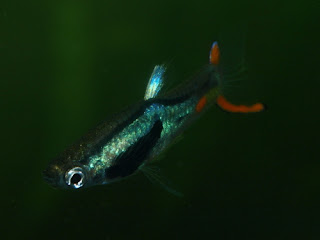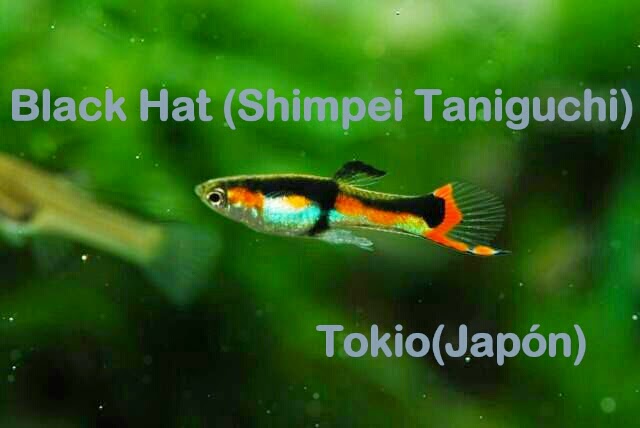Según estudios genéticos realizados de forma privada,queda demostrada la diferencia genética del endler respecto al guppy (reticulata).
También, teniendo en cuenta que las propias capturas de Armando Pou fueron destinadas para realizar estudios genéticos en diferentes universidades como el estudio de Canadá.
De forma privada, a su vez el criador Japonés Shimpei Taniguchi también pagó 2000€ para que realizaran pruebas de ADN en 4 peces de los varios que le cedió Armando Pou, dando resultados concluyentes.
www.endlerpoeciliawingei.blogspot.com
@endlerpoeciliawingei
Links:
https://www.mdpi.com/2073-4425/9/5/238/htm
Http://www.mapress.com/zootaxa/2009/f/zt02266p050.pdf
Estudio del 2014:
http://www.biomedcentral.com/content/pdf/1471-2148-14-28.pdf
http://www.ncbi.nlm.nih.gov/pubmed/24533965
http://www.mapress.com/zootaxa/2009/f/zt02266p050.pdf
The hypothesis that the Caroni (including the Northern rivers) and Oropuche drainage have an independent freshwater fauna from different ancestral lineages is supported by studies on reptiles (Boos, 1984), the cyprinodont fish Rivulus hartii (Jowers et al., 2008) and paleogeographic evidence. During the glaciation periods of the Pleistocene sea levels were up to 130 m lower and Trinidad was connected to the mainland (Kenny, 1988). The Orinoco, the main distribution area of P. reticulata, at that time reached further northward and was probably connected to the Caroni drainage, discharging to the Gulf of Paria. The Oropuche drainage had most likely confluence with a separate more easterly river system and was colonized from there. Thus P. obscura and P. reticulata arrived from different regions to Trinidad and did not cross the watershed that still separates them in the Northern mountain range. We hypothesize that P. wingei was the most western species but recently was circled by northwest colonizing populations of P. reticulata.
Poeser et al. (2005) argued that the Eastern Trinidad guppies, now P. obscura, originally were the same species as P. wingei and have been “despeciated” through hybridization and genetic introgression by the Common (or Orinoco) guppy, P. reticulata. Our molecular analysis does not support this interpretation, as there is absolutely no indication of a closer relationship of P. obscura with P. wingei.
Given the strong variation in male pigmentation the description of P. wingei on the basis of coloration was not conclusive. Butour molecular data now define the species unequivocally and show that it is a separated taxon from P. reticulata and P. obscura. Clearly, all fish earlierclassified and recognized as Endler’s guppies from localities in and around Cumana are P. wingei.
The molecular barcode from mitochondrial sequences will help to define the actual species ranges and hybrid zones. Evidently fish from collecting station 6 of Poeser et al. (2005) were designated by these authors as P. reticulata on the basis of their male coloration phenotype. We revisited this place (El Cordon, EC). The molecular analysis revealed clearly that these fish have the P. wingei mitochondrial sequence (Fig. ). No further data exist to clarify whether this discrepancy can be explained by interspecific hybridization. We also noted as reported by Poeser et al. (2005) that in the river below the El Cordon waterfall several males had an unusual long gonopodium. However, closer inspection revealed that all of these were immature males and that the gonopodium, once fully differentiated is not longer than of any other guppy. Only in the transition period of the anal fin to the intromittent male genitalia a prolongation of the fin happens. This can be seen although in a less extreme degree in any other guppy strain. It is unclear whether this is an environmental effect, because such an extreme lengthening of the transforming anal fin was not observed anymore in the subsequent captivity reared offspring.
Male coloration is much more uniform in P. wingei from Cumanaand is much alike the pigmentation of the fish from Campoma and all earlier known Endler’s guppies (Fig. 2g,h).
We suspect that fish (see Fig. 2f) collected by Poeser et al. (2005) including those from the El Cordon waterfall, which have a similar color pattern as the Orinoco variety” (=P. reticulata), but have additionally some metallic pigment spots like P. wingei from the Locus typicus and the Cumana populations (CC, LP) may be hybrids. Future studies that include nuclear genetic markers will be necessary to clarify this.
All other fish that based on molecular data could be unequivocally assigned to the P. wingei clade were of a typical coloration distinct (see also Fig. 2g,h) from P. obscura and P. reticulata, which we describe here as: longitudinal broad red band extending maximally from the operculum to the caudal fin base, along or above the lateral midline in the trunk and along or below the lateral midline in the peduncle, often interrupted by a
vertical black bar originating around the anal fin base and extending to the dorsal fin base or anterior thereof. The red band often dissolved into oval or rarely round red spots, especially in the peduncle. A black stripe above the red band extending maximally to the eyes and the caudal fin base, sometimes missing in the trunk area. Additional dark black coloration of the ventral margin of the peduncle in many males. Caudal fin often with ventral and dorsal sword-like coloration, red, yellow or white, often with a black margin, frequently upper and/or lower rays of caudal fin prolonged to form colored swords or double-swords. Some males with arge black shoulder spot with fuzzy margin, similar to the vertical bar. Perfectly round dark black body spots with sharp borders, which are typical for P. reticulata and P. obscura males, very rare. Large roundish or oval bright metallic blotches of, green, or more rarely yellow or light blue iridescent color following the basic longitudinal pattern interrupting the red band in the peduncle. White markings rare on the body sides. Rarely small black irregular spots on the belly. Dorsal fin hyaline, yellow and black coloration, sometimes anterior and dorsal margin black. This typical coloration has been documented extensively by Alexander & Breden (2004) for the populations from Central Cumana and we found this also for the Laguna de los Patos (West Cumana) and Campoma populations.
What Does All that Info Means =
Wingei are not same as reticulata and some individuals know nothing about differentiation between poecilias = Specially wingei..( if pure or hybrids )..





















































